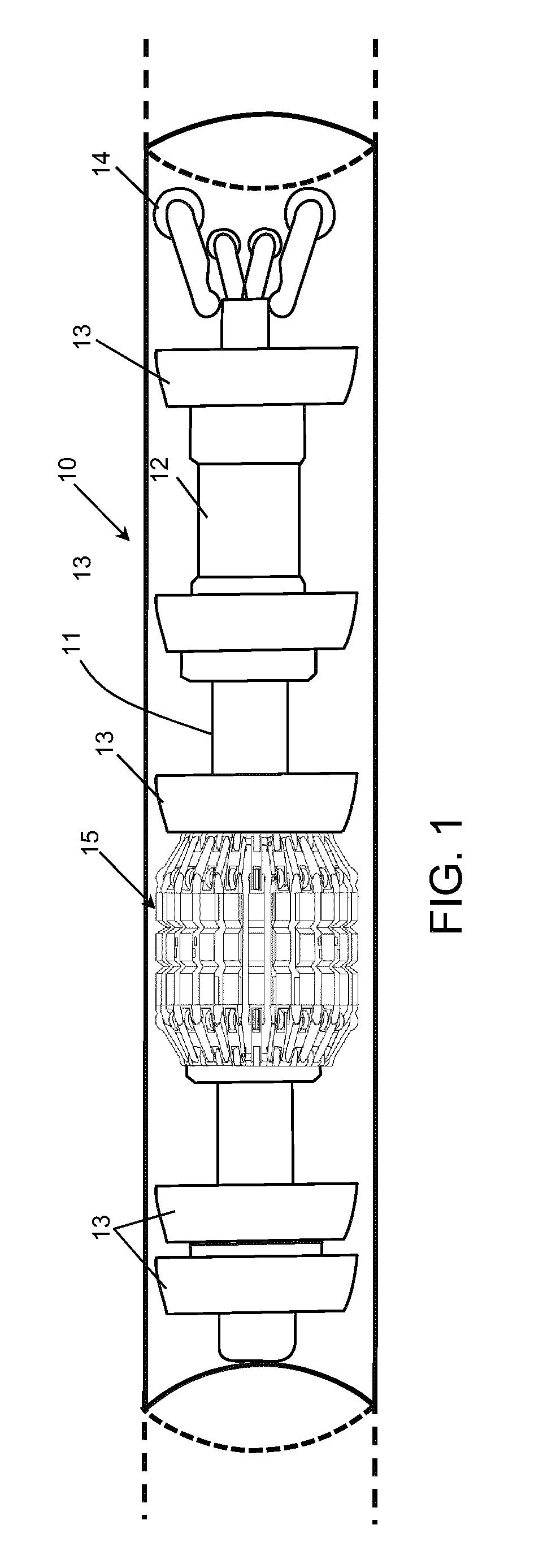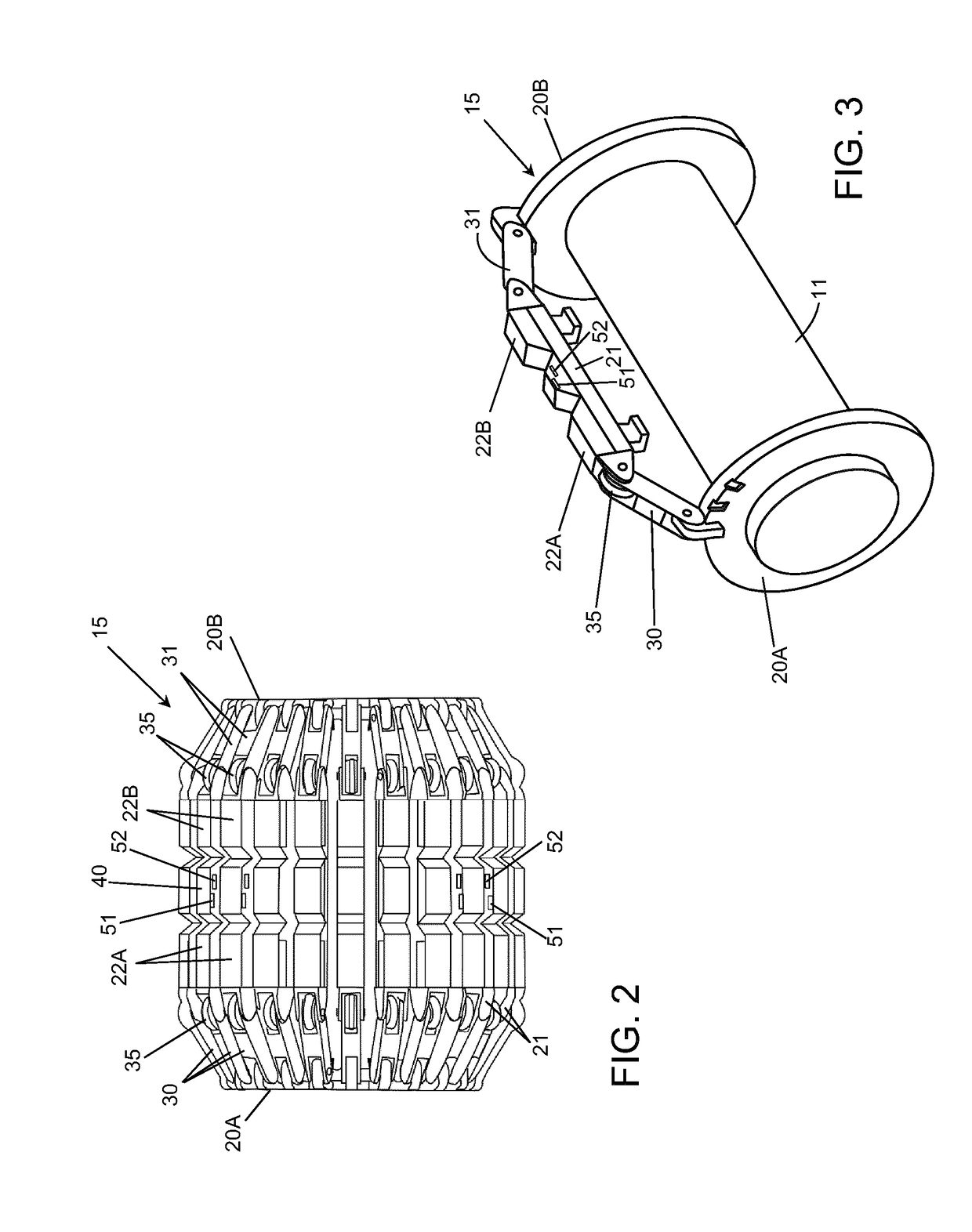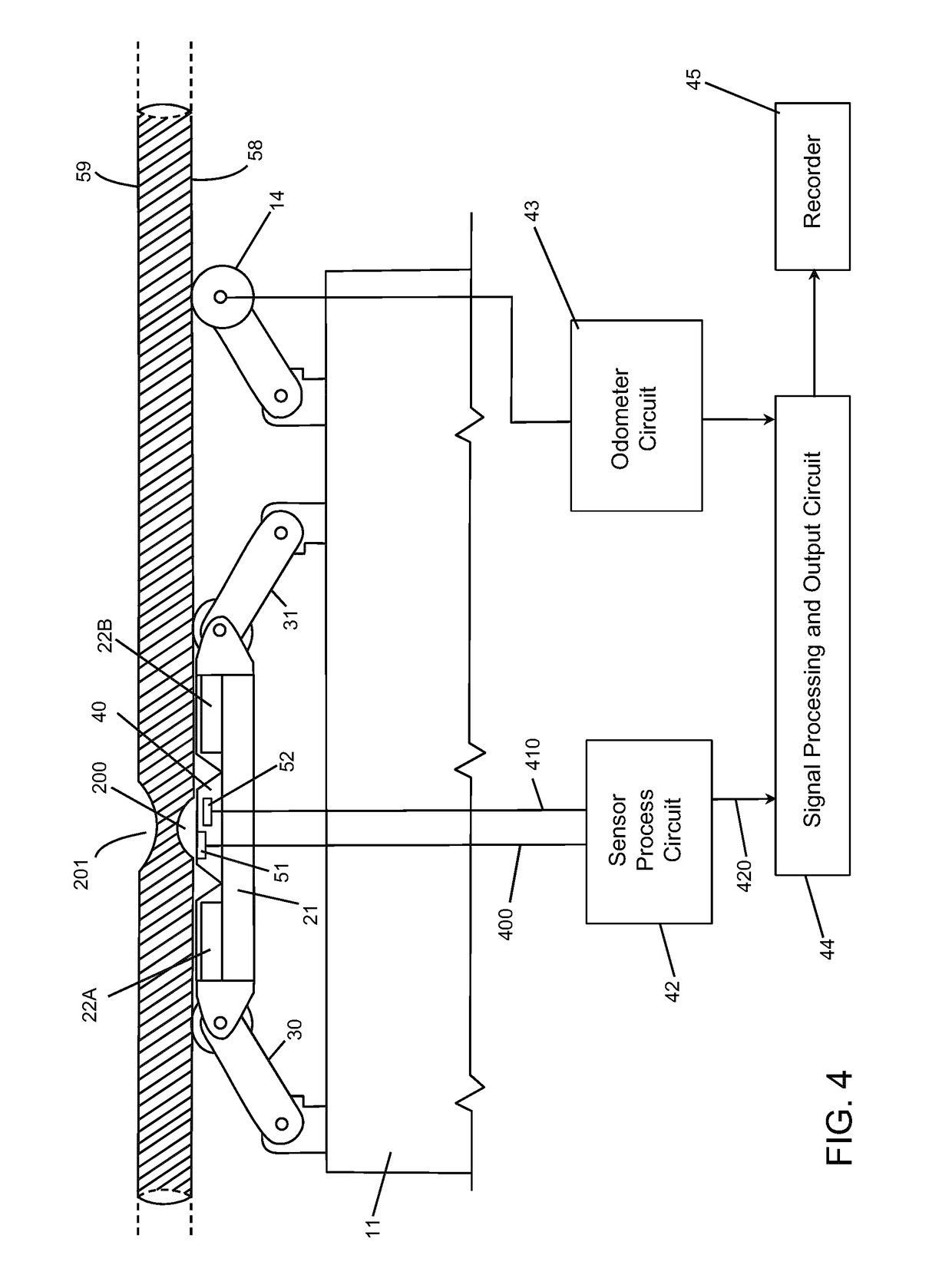System and Method for Detecting and Characterizing Defects in a Pipe
a technology of system and method, applied in the direction of magnetic measurement, measurement device, instruments, etc., can solve the problems of pipeline inevitably corroding or otherwise developing defects, metal loss, cracks, etc., and the configuration of magnetic sensors may not be able to distinguish between which defects
- Summary
- Abstract
- Description
- Claims
- Application Information
AI Technical Summary
Problems solved by technology
Method used
Image
Examples
Embodiment Construction
[0022]Referring to FIG. 1, an in-line inspection device 10 used for various pipeline servicing purposes is shown. The in-line inspection device 10 in this example includes a plurality of annular cups 13 affixed around the circumference of the central body 11 which serve to center the inspection device 10 within the pipeline and also to engage the internal pipeline wall so as to trap the flowing fluid, enabling the device to be pushed along the pipeline by the fluid. In the embodiment shown, the in-line inspection device 10 has an instrumentation apparatus 15 that supports magnetic sensor assemblies as discussed below, and a support module 12 that may house the batteries and other electronic and / or recording equipment. Further, the tail end of the device 10 may comprise one or more odometers 14 which measure the distance travelled by the device 10 and provide signals that reveal the location of a pipeline feature.
[0023]The inspection device 10 shown is illustrated by way of example o...
PUM
| Property | Measurement | Unit |
|---|---|---|
| polarities | aaaaa | aaaaa |
| distance | aaaaa | aaaaa |
| dimensions | aaaaa | aaaaa |
Abstract
Description
Claims
Application Information
 Login to View More
Login to View More - R&D
- Intellectual Property
- Life Sciences
- Materials
- Tech Scout
- Unparalleled Data Quality
- Higher Quality Content
- 60% Fewer Hallucinations
Browse by: Latest US Patents, China's latest patents, Technical Efficacy Thesaurus, Application Domain, Technology Topic, Popular Technical Reports.
© 2025 PatSnap. All rights reserved.Legal|Privacy policy|Modern Slavery Act Transparency Statement|Sitemap|About US| Contact US: help@patsnap.com



